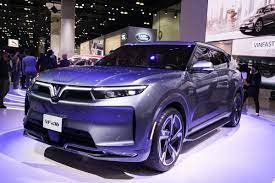Should You Choose a Car with Inline or V-Shaped Engine Configuration?
When considering purchasing a car, one important aspect to consider is the engine configuration. Two popular options are inline (straight) engines and V-shaped engines. In this article, we will explore the differences between these configurations to help you make an informed decision when choosing a car.

Inline (Straight) Engine Configuration:
An inline engine consists of cylinders arranged in a straight line, typically in a vertical or horizontal orientation. This configuration allows for a compact design and straightforward construction. Inline engines tend to be more fuel-efficient, as the airflow through the cylinders is more efficient, resulting in improved combustion. They also offer better balance and smoother operation, which translates to a more refined driving experience.
V-Shaped Engine Configuration:
A V-shaped engine has cylinders arranged in two banks, forming a “V” shape when viewed from the front. The angle between the cylinder banks can vary, commonly ranging from 60 to 90 degrees. V-shaped engines often have a more compact design and can fit in tighter engine bays. They are known for their power and performance, as the V shape allows for larger displacement and increased horsepower. Additionally, the V-shaped configuration often provides better weight distribution, enhancing handling and stability.
Considerations for Choosing an Engine Configuration:
- Performance Requirements: Consider your performance needs and preferences. If you prioritize power and acceleration, a V-shaped engine may be more suitable. However, if fuel efficiency and smooth operation are higher on your list, an inline engine could be a better choice.
- Space and Design Constraints: Evaluate the available space in the vehicle’s engine bay. V-shaped engines are generally more compact and may be advantageous if space is limited. However, inline engines can be simpler and easier to maintain due to their straight design.
- Handling and Balance: Consider the impact of engine configuration on handling and balance. Inline engines typically offer better balance due to their symmetrical design, resulting in improved stability and a more predictable driving experience.
- Fuel Efficiency: Inline engines generally offer better fuel efficiency due to their efficient airflow and combustion process. If fuel economy is a priority, an inline engine might be the better option.
- Noise and Vibration: Both engine configurations can vary in terms of noise and vibration. Inline engines are known for their smooth operation, while V-shaped engines may produce a distinct sound and vibrations, especially at higher RPMs.
Choosing between an inline or V-shaped engine configuration depends on your specific needs and preferences. Inline engines offer better fuel efficiency, smoother operation, and balance, while V-shaped engines provide increased power and performance. Consider factors such as performance requirements, space constraints, handling, fuel efficiency, and noise/vibration preferences when making your decision. Ultimately, both engine configurations have their advantages, and the choice will depend on the specific characteristics and driving experience you desire.

